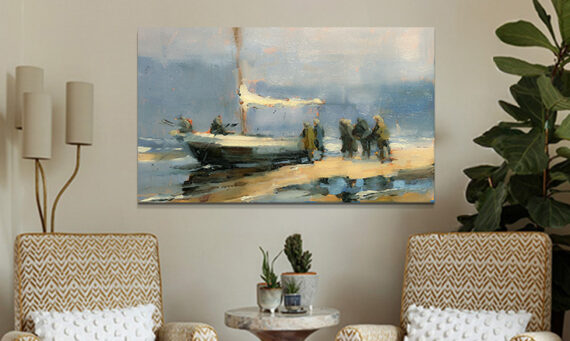Landscape Art
Landscape art celebrates the beauty and power of nature, offering viewers a window into the world’s varied environments. From vast mountain ranges and serene seascapes to idyllic countryside vistas, landscape artists use their craft to evoke the sublime, the tranquil, and sometimes, the melancholic.
This genre has its roots in the works of 17th-century European painters like Claude Lorrain and Jacob van Ruisdael, who elevated the natural world as a subject worthy of study and appreciation. However, it was the Romantic artists of the 19th century—such as J.M.W. Turner and Caspar David Friedrich—who brought emotional depth to landscape painting, turning nature into a reflection of the inner psyche.
Contemporary landscape artists continue this tradition, but with a range of techniques and styles. Rupert Muldoon’s delicate brushwork captures the quiet beauty of the countryside, emphasizing the soft play of light across fields and hills. Patrick Reeves, for instance, uses soft, atmospheric strokes to capture the mood and light of a particular moment, while James Decent’s works explore texture and the interplay of light and shadow. Peter Wileman’s use of bold, contrasting colours creates dynamic seascapes that are at once dramatic and inviting.
Landscape art, at its core, is about connection—connection to the land, to the moment, and to the ever-changing forces of nature. These works transport us to distant places, allowing us to experience the serenity, beauty, or wildness of the natural world from wherever we stand.








